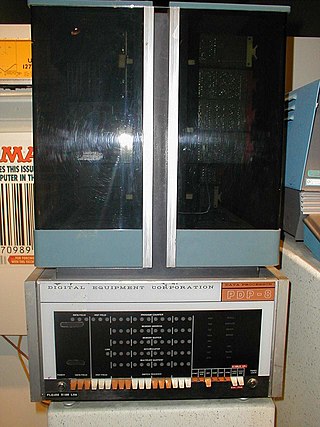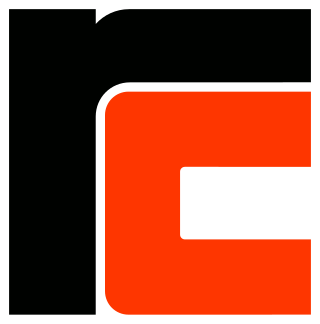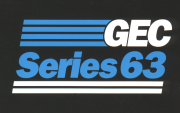This article needs additional citations for verification .(July 2020) |


GEC Computers Limited was a British computer manufacturing company under the GEC holding company from 1968 until the 1990s.
This article needs additional citations for verification .(July 2020) |


GEC Computers Limited was a British computer manufacturing company under the GEC holding company from 1968 until the 1990s.
Starting life as Elliott Automation, in 1967–68 the data processing computer products were transferred to ICT/ICL and non-computing products to English Electric as part of a reorganisation of the parent company forced by the British Government. English Electric then merged into the GEC conglomerate in 1968.
Elliott Automation retained the real-time computing systems, the Elliott 900 series computers, and set about designing a new range of computer systems. The rules of the reorganisation did not allow Elliott Automation to continue working on data processing computing products for some years after the split (and similarly, prevented ICT/ICL working on real-time computing products). Three new computer ranges were identified, known internally as Alpha, Beta, and Gamma. Alpha became the GEC 2050 8-bit minicomputer, and beta became the GEC 4080 16-bit minicomputer with its unique Nucleus feature. Gamma was never developed, so a few of its enhanced features were consequently pulled back into the GEC 4080.
The company's main product was the GEC 4000 series minicomputers, which were used by many other GEC and Marconi companies as the basis for real-time control systems in industrial and military applications. Development of new computers in the series continued through most of the life of the company. Other products manufactured in the earlier years were the GEC 2050, computer power supplies, and high resolution military computer displays, as well as the Elliott 900 series for existing Elliot customers. GEC Computers also found that some of the software applications it developed for its own use were saleable to other companies, such as its salary payment services, its multi-layer printed circuit board design software, and its project management software.
In the mid-1970s, GEC Computers was working on OS4000, a more advanced operating system for the GEC 4000 series. This opened up the 4000 series to more customers, including the academic and research communities. A number of collaborative projects were undertaken, some of which resulted in applications which GEC Computers developed further and sold, in addition to the sales of the computers themselves. One of the largest of these were X.25 packet switch systems, which resulted from a research collaboration with NERC.
In the late 1970s, Post Office Telecommunications developed Prestel on the GEC 4000 series, and this resulted in sales for similar applications all over the world.
In 1979, the company was awarded the Queen's Award for Technical Achievement for the development of the 4000 series, particularly Nucleus. [1]
By 1980, OS4000 was becoming popular in UK academic and research organisations as a multi-user system, with installations at Rutherford-Appleton Laboratory, Daresbury Laboratory, Harwell Laboratory, NERC, Met Office, CERN, in many university physics and/or engineering departments, and as the main central computer service at University College London (Euclid) and Keele University. To cater for this market, in the early 1980s the company partnered with American company A. B. Dick to develop the GEC Series 63, which could run OS6000 (based on OS4000) or UNIX System III, and later UNIX System V; however, sales were disappointing and the 63 series was discontinued in 1987.
The numbers of GEC computer systems around the UK by now meant that GEC Computers had built up a widespread field service organisation, and could guarantee on-site response within hours across pretty much the whole country. This turned out to be a valuable asset. Many new technology companies trying to enter the market struggled when required to provide this type of service, and GEC Computers started taking on third-party field service support for many other companies, including some which competed with GEC Computers' own products. (Some of these operations survived in Telent following the 2005 demise of GEC.)
Throughout the 1980s, GEC Computers expanded from its Borehamwood offices into three large purpose-built factory units in the Woodside Estate, Dunstable. The company closed these as the business contracted in the 1990s.
GEC Computers' extensive presence in UK academic and research organisations, and its field service organisation, led Sun Microsystems to choose GEC Computers to be its presence in the UK for the launch of its Sun-2 product range in the early 1980s, which GEC Computers sold under the name of GEC Series 42. GEC Computers developed some reduced cost workstations called the GEC Series 21, based on Atari 520ST and 1040ST systems with replaced PROM operating system code. GEC Computers was not particularly successful at selling the Sun systems, and Sun opened UK offices to sell direct, although GEC Computers' field service continued to support Sun Microsystems across the UK for many years, until Sun built up its own field service organisation.
At the company's peak in the early 1980s there were about 1,600 employees, mainly based in the original Elliott building at Borehamwood, and at Dunstable. There were a number of small offices in many other countries too.
By the 1990s, the real-time process control market was moving to cheaper microprocessor-based systems, and GEC 4000 series sales into that market dried up. X.25 networks were being replaced by Internet networks, and so X.25 packet switch sales dwindled too. This left just the Videotex sales to other countries, and so the company concentrated on this product. However, there was only a window of a few years before the World Wide Web displaced Videotex systems, and the last of the company's main markets ended.
From the mid-1990s, manufacture of systems ceased, although maintenance of installed systems and third-party maintenance continues today (2019).
The company had many names throughout its lifetime, although GEC Computers is probably the best known in connection with the company's main products of the 1970s and 1980s. The sequence of company names was:
after which the remains of the company folded into Marconi Communications, and subsequently into Telent.
GEC Computers was granted permission by GEC to not use the usual GEC logo on its products, as the logo was seen as rather old-fashioned (even in the early 1970s) for the new branding for the company.

A minicomputer, or colloquially mini, is a type of smaller general-purpose computer developed in the mid-1960s and sold at a much lower price than mainframe and mid-size computers from IBM and its direct competitors. In a 1970 survey, The New York Times suggested a consensus definition of a minicomputer as a machine costing less than US$25,000, with an input-output device such as a teleprinter and at least four thousand words of memory, that is capable of running programs in a higher level language, such as Fortran or BASIC.
Marconi Electronic Systems (MES), or GEC-Marconi as it was until 1998, was the defence arm of General Electric Company (GEC). It was demerged from GEC and bought by British Aerospace (BAe) on 30 November 1999 to form BAE Systems. GEC then renamed itself Marconi plc.
The General Electric Company (GEC) was a major British industrial conglomerate involved in consumer and defence electronics, communications, and engineering. The company was founded in 1886, was Britain's largest private employer with over 250,000 employees in the 1980s, and at its peak in the 1990s, made profits of over £1 billion a year.

Videotex was one of the earliest implementations of an end-user information system. From the late 1970s to early 2010s, it was used to deliver information to a user in computer-like format, typically to be displayed on a television or a dumb terminal.
The Plessey Company plc was a British electronics, defence and telecommunications company. It originated in 1917, growing and diversifying into electronics. It expanded after World War II by acquisition of companies and formed overseas companies.

International Computers Limited (ICL) was a British computer hardware, computer software and computer services company that operated from 1968 until 2002. It was formed through a merger of International Computers and Tabulators (ICT), English Electric Computers (EEC) and Elliott Automation in 1968. The company's most successful product line was the ICL 2900 Series range of mainframe computers.

Regnecentralen (RC) was the first Danish computer company, founded on October 12, 1955. Through the 1950s and 1960s, they designed a series of computers, originally for their own use, and later to be sold commercially. Descendants of these systems sold well into the 1980s. They also developed a series of high-speed paper tape machines, and produced Data General Nova machines under license.

Ferranti or Ferranti International plc was a UK electrical engineering and equipment firm that operated for over a century from 1885 until it went bankrupt in 1993. The company was once a constituent of the FTSE 100 Index.
The Marconi Company was a British telecommunications and engineering company that did business under that name from 1963 to 1987. Its roots were in the Wireless Telegraph & Signal Company founded by Italian inventor Guglielmo Marconi in 1897, which underwent several changes in name after mergers and acquisitions. The company was a pioneer of wireless long distance communication and mass media broadcasting, eventually becoming one of the UK's most successful manufacturing companies. In 1999, its defence equipment manufacturing division, Marconi Electronic Systems, merged with British Aerospace (BAe) to form BAE Systems. In 2006, financial difficulties led to the collapse of the remaining company, with the bulk of the business acquired by the Swedish telecommunications company, Ericsson.

Marconi Communications, the former telecommunications arm of Britain's General Electric Company plc (GEC), was founded in August 1998 through the amalgamation of GEC Plessey Telecommunications (GPT) with other GEC subsidiaries: Marconi SpA, GEC Hong Kong, and ATC South Africa.
GEC Plessey Telecommunications (GPT) was a British manufacturer of telecommunications equipment, notably the System X telephone exchange. The company was founded in 1988 as a joint venture between GEC and the British electronics, defence and telecommunications company Plessey. The next year, after a joint holding company of GEC and the German conglomerate Siemens acquired Plessey, GPT was converted into a 60/40 GEC/Siemens joint venture. The GPT name ceased to be used in the mid-1990s, and in 1998 the company was amalgamated into Siemens Communications.
BAE Systems Avionics was the avionics unit of BAE Systems until 2005, at which time it was transferred to SELEX Sensors and Airborne Systems S.p.A.. Selex S&AS became SELEX Galileo in 2008 and from January 2013 traded as Selex ES. It then merged into Leonardo S.p.A.'s land and naval defence electronics division on 1 January 2016.

Elliott Brothers (London) Ltd was an early computer company of the 1950s–60s in the United Kingdom. It traced its descent from a firm of instrument makers founded by William Elliott in London around 1804. The research laboratories were originally set up in 1946 at Borehamwood and the first Elliott 152 computer appeared in 1950.

Telent Technology Services Limited is a British radio, telecommunications, and digital infrastructure systems installation and services provision company. The name was used from 2006 for those parts of the United Kingdom and German services businesses of Marconi Corporation which had not been acquired by Ericsson. Companies with Marconi in their name can trace their ultimate origins, through mergers and takeovers, to The Marconi Company Ltd, founded by Guglielmo Marconi in 1897 as The Wireless Telegraph & Signal Company.

The GEC 4000 was a series of 16/32-bit minicomputers produced by GEC Computers Ltd in the United Kingdom during the 1970s, 1980s and early 1990s.

The GEC Series 63 was a 32-bit minicomputer produced by GEC Computers Limited of the UK during the 1980s in conjunction with A. B. Dick in USA. During development, the computer was known as the R Project. The hardware development was done in Scottsdale, Arizona whilst the software was the responsibility of GEC in Dunstable, UK. The hardware made early use of pipeline concepts, processing one instruction whilst completing the preceding one.

Interdata, Inc., was a computer company, founded in 1966 by a former Electronic Associates engineer, Daniel Sinnott, and was based in Oceanport, New Jersey. The company produced a line of 16- and 32-bit minicomputers that were loosely based on the IBM 360 instruction set architecture but at a cheaper price. In 1974, it produced one of the first 32-bit minicomputers, the Interdata 7/32. The company then used the parallel processing approach, where multiple tasks were performed at the same time, making real-time computing a reality.
OS4000 is a proprietary operating system introduced by GEC Computers Limited in 1977 as the successor to GEC DOS, for its range of GEC 4000 series 16-bit, and later 32-bit, minicomputers. OS4000 was developed through to late 1990s, and has been in a support-only mode since then.
The GEC 2050 was an 8-bit minicomputer produced during the 1970s, initially by Marconi Elliott Computer Systems of the UK, before the company renamed itself GEC Computers Limited. The first models were labeled MECS 2050, before being renamed GEC 2050.